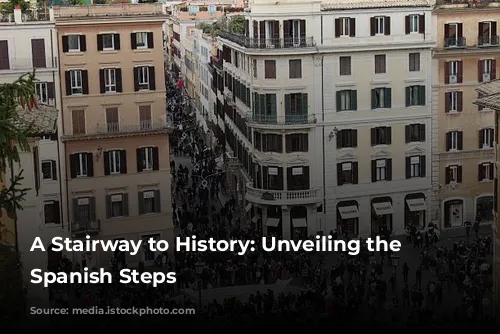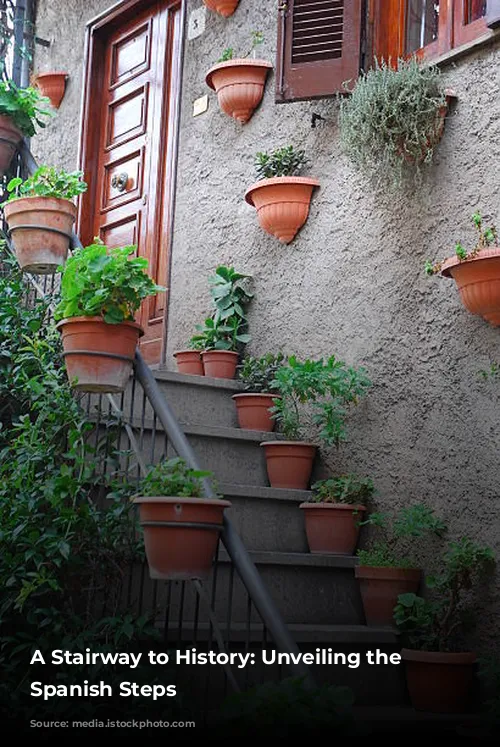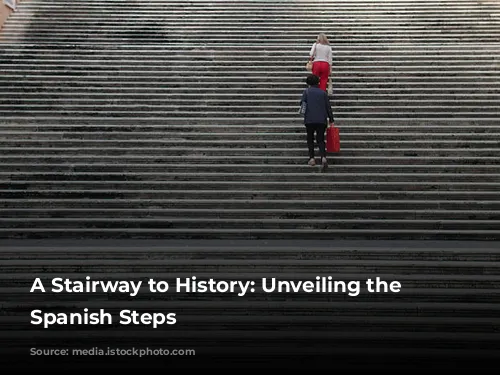The Spanish Steps (in Italian, Scalinata di Trinità dei Monti) in Rome, Italy, are a monumental landmark that connects the bustling Piazza di Spagna at the base with the serene Piazza Trinità dei Monti at the top, dominated by the Trinità dei Monti church. This majestic stairway, comprising 135 steps, has witnessed centuries of history and continues to be a beloved destination for tourists and locals alike.
A Monument of French and Papal Influence
The Spanish Steps have a strong connection with both French and Papal influence. Standing at the top of the steps is the Trinità dei Monti church, which was patronized by the Bourbon kings of France. At the foot of the steps lies the Spanish Embassy to the Holy See, housed in the Palazzo Monaldeschi.
The creation of this iconic stairway was a long and winding journey. The steep slope leading to the church had been a source of debate for generations, with architects and urban planners grappling with the best way to connect the two plazas. Early designs, dating back to the 1580s, show Pope Gregory XIII’s interest in building a staircase to the newly completed façade of the French church.
From Gueffier’s Will to a Competition
A turning point came in 1660 when French diplomat Étienne Gueffier left part of his fortune for the construction of the stairs. Cardinal Mazarin, a prominent figure in Roman society, embraced the project and entrusted it to his agent in Rome.
However, Mazarin’s ambitious plan, which included an equestrian monument to Louis XIV of France, stirred controversy in Papal Rome. The death of both Mazarin and the Pope, along with a legal battle over Gueffier’s will, stalled the project for nearly half a century.
Eventually, Pope Clement XI Albani reignited interest in the project in the early 18th century. A competition was held in 1717, which was ultimately won by Francesco de Sanctis.
Architectural Innovation and Symbolism
De Sanctis’ design, which was inspired by earlier works by Donato Bramante and Michelangelo, presented a bold solution to the challenge of urbanizing the steep slope. It incorporated elements of terraced garden stairs, a symmetrical layout, and sculpted details that reflected both French and Papal influence. The iconic Bourbon fleur-de-lys and Innocent XIII’s eagle and crown are prominently displayed, harmoniously blending the two cultures.
A Stairway to History and Renewal
Over the centuries, the Spanish Steps have endured the test of time, although not without experiencing their share of wear and tear. Restoration efforts have taken place throughout history, including a major renovation in 1995.
In recent years, the steps have been the subject of renewed attention, with the Italian luxury brand Bulgari spearheading a massive restoration project that was completed in 2016. This ambitious undertaking involved over 80 workers and cost €1.5 million, restoring the 3,000 square meters of travertine stone, brick, marble, and plaster.
A Beloved Landmark with a Touch of Controversy
Despite its historical significance and enduring beauty, the Spanish Steps have also faced challenges in recent years. The popularity of the landmark has led to challenges in maintaining order and protecting the historical site. Local authorities have struggled to enforce regulations prohibiting loitering, eating, and other activities that might damage the steps.
In 2019, Rome’s city administration introduced more stringent measures aimed at ensuring the decorum and security of the site. These regulations, including hefty fines for sitting on the steps, have sparked debate about striking a balance between preserving a historic landmark and ensuring accessibility for visitors.
A Tapestry of Culture and Artistic Expression
The Spanish Steps are not just a physical landmark but a vibrant cultural hub that has inspired artists and writers for centuries. They have been featured in countless works of literature, film, and music, reflecting the beauty, intrigue, and romance of the eternal city.
Some notable examples include: F. Scott Fitzgerald’s novel “Tender Is the Night,” which captures the spirit of the Roaring Twenties, and the classic film “Roman Holiday,” starring Audrey Hepburn, which beautifully showcases the allure of Rome.
The Spanish Steps are a testament to the enduring power of art, history, and culture. They continue to captivate visitors from around the world, offering a glimpse into the rich tapestry of Rome’s past, present, and future.










